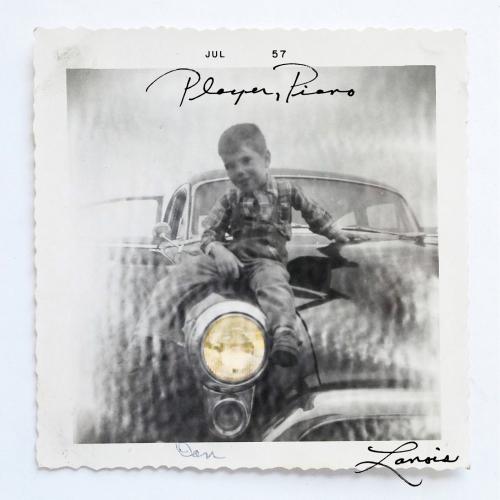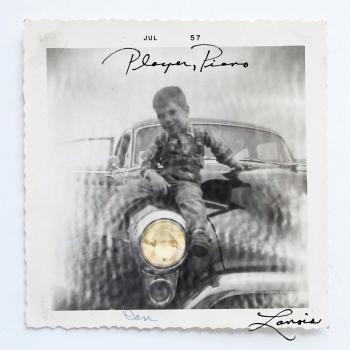
Player, Piano Daniel Lanois
Album Info
Album Veröffentlichung:
2022
HRA-Veröffentlichung:
23.09.2022
Label: Modern Recordings
Genre: Instrumental
Subgenre: Piano
Interpret: Daniel Lanois
Komponist: Daniel Lanois (1951)
Das Album enthält Albumcover
Entschuldigen Sie bitte!
Sehr geehrter HIGHRESAUDIO Besucher,
leider kann das Album zurzeit aufgrund von Länder- und Lizenzbeschränkungen nicht gekauft werden oder uns liegt der offizielle Veröffentlichungstermin für Ihr Land noch nicht vor. Wir aktualisieren unsere Veröffentlichungstermine ein- bis zweimal die Woche. Bitte schauen Sie ab und zu mal wieder rein.
Wir empfehlen Ihnen das Album auf Ihre Merkliste zu setzen.
Wir bedanken uns für Ihr Verständnis und Ihre Geduld.
Ihr, HIGHRESAUDIO
- 1 My All 02:23
- 2 Lighthouse 03:09
- 3 Inverness 02:49
- 4 Parade 01:26
- 5 Twilight 03:25
- 6 Puebla 02:05
- 7 Eau 02:23
- 8 Zsa Zsa 02:54
- 9 Clinch 02:57
- 10 Sweet Imagination 01:37
- 11 Wild Child 02:20
- 12 Cascade 03:40
- 13 Sunday Asylum 03:01
Info zu Player, Piano
Der Grammy ausgezeichnete Songwriter und Produzent Daniel Lanois kündigt die bevorstehende Veröffentlichung seines neuen Albums „Player, Piano“ an. Das Album enthält eine Reihe von exotischen Instrumental-Piano-Performances und wurde in Lanois‘ Studio in Toronto mit der Hilfe des Co-Produzenten Dangerous Wayne Lorenz aufgenommen.
“‚My All‘ ist eine Melodie, die ich als Abschiedsgruß für meinen kleinen Bruder geschrieben habe, der verstorben ist“, schreibt Lanois. „Der Klavierpart basiert auf einem Ansatz, den ich von Steven Tyler von Aerosmith gelernt habe. Vor einiger Zeit war Steven bei mir zu Hause und spielte auf meinem Klavier. Er zeigte mir einen Pianostil in den man einen Akkord mit der rechten Hand wiederholt und währenddessen mit der linken Hand eine bewegte Melodie spielt. Das war ein Wendepunkt in meinem Klavierspiel… Danke, Steven!“
„In einer Zeit, in der ich nirgendwo reisen konnte, hat mich die Aufnahme dieser Platte wegtransportiert“, sagt Lanois. „Ich konnte nach Kuba, Mexiko und Jamaika reisen. Ich konnte die Geister von Erik Satie und Oscar Peterson und Harold Budd besuchen. Ich konnte in die Vergangenheit gehen und meine Arbeit mit Brian Eno und Kate Bush und Emmylou Harris erleben. Und das alles, ohne jemals mein Studio zu verlassen.”
Um die zeitlos klingenden Aufnahmen auf „Player, Piano“ zu erzielen, machten sich Lanois und Lorenz daran, jedes der drei Klaviere im Studio umzugestalten, die Saiten mit Geschirrtüchern zu dämpfen und den perkussiven Aufprall der Hämmer abzuschwächen indem sie kleine Filzkissen auf die Köpfe legten. Für die Aufnahmen wurden alte Bändchenmikrofone verwendet, die nicht vor, sondern hinter den Instrumenten angeordnet wurden, um den Klang noch weicher zu machen. „Ich beschloss, dass ich eine Klavieraufnahme machen wollte, die wie Aufnahmen aus den 40er und 50er Jahren klingen sollte, als das Klavier noch weich und schön war“, erklärt Lanois.
Als einer der renommiertesten und einflussreichsten Produzenten der Neuzeit hat er legendäre Alben für Bob Dylan und Neil Young bis hin zu U2 und Peter Gabriel produziert. Als produktiver und von der Kritik gefeierter Songwriter komponierte er die Musik für Oscar-prämierte Filme und Videospiel-Blockbuster und veröffentlichte mehr als ein Dutzend genreübergreifende Soloalben. Der Rolling Stone erklärte, dass seine „unverwechselbaren Fingerabdrücke auf einem ganzen Flügel der Rock and Roll Hall of Fame zu finden sind“ (man denke an „The Joshua Tree“, „Wrecking Ball“, „Time Out Of Mind“), während NPR ihn als Autor seiner eigenen „brillanten Alben mit herzlichen Songs“ lobte.
Jeder Song auf „Player, Piano“ ist ein Portal, eine Einladung, sich im Moment zu verlieren und in eine Welt der Fantasie und Erinnerung zu entschwinden. Die Melodien entfalten sich langsam mit Geduld und Anmut; ätherische Arrangements treiben um sie herum wie Nebel, der durch die Berge zieht. „Player, Piano“ ist mehr als nur ein Album, es ist ein Tor zu einem filmischen Klanguniversum voller Geheimnisse und Wunder, ein Ort, an dem die Grenzen zwischen Realität und Fantasie verschwimmen und tiefe Wahrheiten und Sehnsüchte sich auf tiefgründige und unerwartete Weise offenbaren.
Daniel Lanois
Daniel Lanois
Superstar producer Daniel Lanois’s career – which includes long-standing working relationships with the likes of Brian Eno, U2 and Emmylou Harris – has its humble roots in a converted early-1900’s Edwardian house in Hamilton, Ontario.
Born in Hull, Quebec, on September 19, 1951, Lanois moved to Hamilton at age 10. He created his first makeshift studio in the basement of his mother’s Ancaster, Ontario house at age 17. And it was at the Edwardian house on Grant Avenue, which bought in 1976, where he made his bones as a producer, working the boards for the likes of new wavers Martha and the Muffins, children’s entertainer Raffi, and singer-songwriter Ray Materick, among others.
Then Lanois began working with former Roxy Music member and electronic music pioneer, Brian Eno. The pair collaborated on 1982’s Ambient 4: On Land and 1983’s Apollo: Atmospheres and Soundtracks, the latter of which was recorded at Grant Avenue. Several production invitations were sent Eno’s way during their time together, including by Irish rock band U2 who were looking to change up their sound after the success of 1983’s War album. After much discussion Eno offered to helm the record that would become The Unforgettable Fire and suggested Lanois be his partner. The band agreed.
Lanois’s association with U2 proved to be his gateway into the production big leagues. He helmed Peter Gabriel’s So album, released in 1986 and Grammy-nominated as Album of the Year, following that with The Band member Robbie Robertson’s eponymously-titled debut solo album and U2’s The Joshua Tree, again with Eno and this time an Album of the Year Grammy winner. For his efforts Lanois won the 1987 Producer of the Year JUNO.
Lanois used his newfound fame to help launch a solo career. His debut record, Acadie (1989), recorded mainly in New Orleans, was well-received and featured high-profile guests like Eno, U2’s Adam Clayton and Larry Mullen Jr, and Aaron Neville of the Neville Brothers. Several solo albums have followed, along with 2010’s Black Dub project which featured Belgian singer/bassist Trixie Wheatley on vocals.
U2 and Peter Gabriel continued to employ Lanois in the ‘90s, while his client list expanded over the next two decades to include Ron Sexsmith (1994’s Ron Sexmith), Emmylou Harris (1995’s Wrecking Ball), Bob Dylan (1997’s Time Out of Mind, which won an Album of the Year Grammy) and Killers’ frontman Brandon Flowers (2010’s Flamingo).
Lanois has also worked extensively in film. He and Eno worked on the score for David Lynch’s Dune (1984), and Lanois has provided music for the Oscar-winning film Sling Blade (1996) and an instrumental score to the Pixies documentary loudQUIETloud (2006). Lanois also produced a documentary on the making of his 2007 solo album Here Is What Is that played at the Toronto International Film Festival.
Lanois was inducted into the Canadian Music Hall of Fame in 2002 and remains an active producer and artist to this day. His recent projects include co-writing and co-producing The Killers’ 2012 album Battle Born and producing Rocco DeLuca’s self-titled fourth album, released in 2014. Lanois’s latest solo album is 2014’s Flesh and Machine.
Dieses Album enthält kein Booklet










